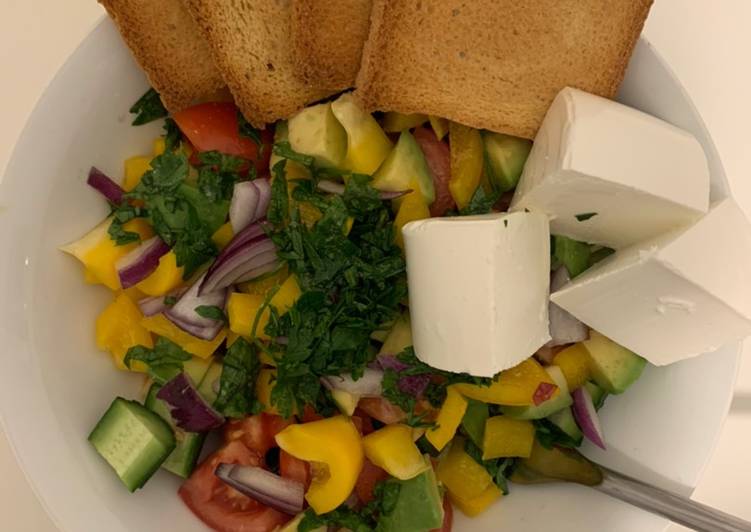
Hey everyone, it’s me, Dave, welcome to my recipe site. Today, we’re going to prepare a distinctive dish, fried seasonal pacific saury with shiso and plum. One of my favorites. This time, I will make it a little bit tasty. This will be really delicious.
Fried Seasonal Pacific Saury with Shiso and Plum is one of the most popular of current trending foods in the world. It’s enjoyed by millions daily. It is easy, it’s fast, it tastes yummy. Fried Seasonal Pacific Saury with Shiso and Plum is something that I have loved my whole life. They’re nice and they look wonderful.
Great recipe for Fried Seasonal Pacific Saury with Shiso and Plum. I was getting tired of broiled or sweet soy sauce flavored sanma, and thought a refreshing umeboshi flavored sanma may taste great. It doesn't have to be the pacific saury (sanma); sardines (iwashi) taste great too.
To begin with this recipe, we have to first prepare a few ingredients. You can have fried seasonal pacific saury with shiso and plum using 11 ingredients and 7 steps. Here is how you can achieve that.
The ingredients needed to make Fried Seasonal Pacific Saury with Shiso and Plum:
- Prepare 2 Pacific saury (sanma)
- Get 6 leaves Shiso leaves
- Make ready 5 medium sizes Umeboshi
- Prepare 1 Rice crackers (if available)
- Take 1 Cake flour (for coating)
- Make ready For the batter:
- Get 3 tbsp ◎ Cake flour (or tempura flour)
- Make ready 3 tbsp ◎ Water
- Prepare For garnish:
- Take 1 Grated daikon radish
- Make ready 1 Chopped Green onion
Pacific saury have long been a familiar flavor of fall in Japan, but lower catches and a newly extended fishing season have raised concerns about declining fish stocks. Sanma or Pacific Saury is one of the most well-known seasonal fish representing autumn in Japanese cuisine. It's usually salted and grilled whole and served with grated daikon and soy sauce to intensify the flavor of the fish. Sanma or Pacific Saury is one of the most well-known seasonal fish representing autumn in Japanese cuisine.
Instructions to make Fried Seasonal Pacific Saury with Shiso and Plum:
- Fillet a pacific saury by cutting it open from the bottom. Lightly sprinkle on some salt and let it sit for 10 minutes. Pat the excess moisture away from the fish and salt with a piece of paper towel.
- Spread out the flesh of about 3 umeboshi on the inside of the fillet, and top it with 3 shiso leaves each on a fillet.
- Roll each of them up from the tail and secure with a toothpick.
- Coat the fish with the cake flour and shake off the excess flour.
- Combine the ◎ ingredients and coat the fish with it.
- Roll the fish to coat the rice crackers evenly. Secure it with a toothpick once it is rolled up. Do not forget to remove the toothpick before serving!
- Heat plenty of oil to 165℃, then insert the rolled fish. Heat the oil up to 180℃. It should be done cooking in about 8 minutes.
Chef-owner Hajime pours his love for delicious cuisine into a constantly changing menu. Patrons rave about the restaurant's sautéed geoduck and the seared tuna, served with garlic sauce, chili oil and scallions. Let's Cook and Eat Seasonal Ingredients in Japan! The use of seasonal ingredients in food has long been valued in Japan. "Shun" refers to the time of year when a given ingre Japanese cuisine revolves heavily around the principle of seasonal eating, and sanma, known in English as Pacific saury or mackerel pike, is a central ingredient during the fall. When the sultry days of summer turn cool and the leaves begin to change color, sanma is caught in northeastern Japan, fat and flavorful from feeding off the coast of.
So that’s going to wrap it up for this special food fried seasonal pacific saury with shiso and plum recipe. Thank you very much for your time. I’m sure that you can make this at home. There is gonna be more interesting food in home recipes coming up. Remember to bookmark this page in your browser, and share it to your family, friends and colleague. Thank you for reading. Go on get cooking!


